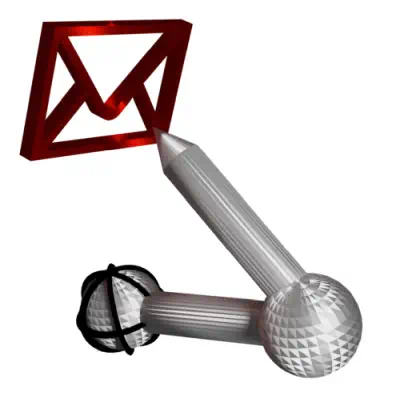AyMINE – Technical documentation
Modules
Integration with ERP Abra Gen
 Task, project & quality management
Task, project & quality management
Manager approval with the task report
Why some data can't be deleted
GDPR and record of qualifications
Qualification of user or contact
Right to Manage Qualifications
Adminitration of areas, projects, calendars
Failure Analysis for an Individual Property of a Component or Process
FMEA – Probability of Detection
FMEA – Probability of Occurrence
 Task, project & quality management
Task, project & quality management
Administration of the Task Management Module
System rights for the task management module
Improvements and Preventive Measures
Methodology and Quality Management systems
What makes up the methodology / SMJ
Problems, tickets and their management
Collaborative Resolution of Multiple Problems
Customer Service Response Generation
Incident and Quality Issue Management
Objects affected by the problem
Problems, Incidents, Helpdesk Tickets
Return project plan by baseline
Sample tasks and methodologies of the area
Effect of the task on the right to modify the attached object
The person responsible for the task
Working procedure – task definition
Management of responsibilities - RACI Matrix
Objects related to the task pattern
 Contacts and directories module (CRM)
Contacts and directories module (CRM)
Address book list and management
Directory or people and companies
Order overview for customer groups
 Contacts and directories module (CRM)
Contacts and directories module (CRM)
System Permissions and CRM Module Settings
Send bulk messages in compliance with GDPR
How to correctly forget a person's details
Unsubscribe and set preferences
for bulk mail
 Web management and automation
Web management and automation
Receiving a message from the web
Human resources
Personalistics – User Permissions and roles
Human Resources module security
Manage department / division data
Overview of Personnel Information for pracov# Employment Contract
Synchronizing staff and system users
 Products, assets and sales
Products, assets and sales
Creating and processing orders
Manage the Property & Business module
Why are the Quality criteria usefull
Managing Finance
Metrics and Measurements
Work summaries from generated data
Technical Modules
Sabre plugin module
Enterprise Architect connector
Database link to Enterprise Architect database
Enterprise Architect connector
System Modules
 The AyMINE Framework Module
The AyMINE Framework Module
AyMINE — Tips for Mobile Usage
Configure how your system looks and works
Gestures and Keyboard Shortcuts
More about how the system works
Private notes and tags for objects
Overview of Modules and Record Types
 Competencies and Skills
Competencies and Skills 
In general language, a competence interchanges qualification. However, although the terms not equal, the AyMINE manages them together – trainings, skills, competencies, competency and qualification are managed in the same way. Look here to read more about them
Standalone sections
More about rights to manage qualifications is here.
Level of competence / qualification is described here.
What's capability or qualification
Capability expresses what someone on the team can do. Examples of capabilities are:
- Capability to speak German
- Write an IT analysis
- Verify product quality
Qualification is competence verified by some qualification control, e.g. exam, certification or a diploma.
Why are the qualifications and competencies important
Most of the companies have some documentation of competencies. However, AyMINE goes much further, because qualifications are integrated into the quality management system and each task-definition from the QMS can be linked with the qualification that the task performer, reviewer or decision maker should have.
Qualifications are automatically controlled when a task is assigned to a responsible in the workflow during the project planning.
Qualification evidence
Documentation of qualifications is related to workers, task definition and defined project roles.
- The qualifications of the user workers are recorded.
- For activities, the standards specify the qualifications of the people in the team carrying out the activity.
Based on the documentation, it is possible to:
- Identify workers for the team with appropriate qualification
- Verify that workers assigned to a task have requisite skills
- The quality management review is fully supported: an internal audit could easily control that all tasks were performed by a person with required qualification
- It is possible to track who is coming to the end of their certificate and schedule new training or clearance.
Where are the qualifications entered?
Qualifications are part of the methodologies.
Unification of qualifications
Each methodology may define its own qualifications, but it is obviously advisable to have only one definition for each qualification you are tracking. However, there are also valid reasons for having multiple descriptions:
- However, if the requirements for similar work differ between methodologies, it may not be effective to describe them in a uniform way. You may then have several times a similar qualification with slightly different requirements for the holder.
- National requirements may also be different – then you need to keep a record of who is qualified for which country.
- Knowledge related to a particular version of the standard. As the standard changes, people need to be retrained. It is therefore necessary to distinguish who is already qualified to the new standard and who is still qualified to the old standard.
- The qualification is defined in the standard where you cannot change it. If the qualification is part of a standard supplied by an external supplier, you probably do not have the ability to modify it. You may then need to create your own if the standard does not suit.
If the qualification is generic and relevant to multiple standards, it may be preferable to create a generic qualification methodology and concentrate all the qualifications in one place.
Don't see the qualifications you need?
The right to track qualifications requires authorization. You must have reader or active user rights to the methodology where the qualifications are defined. If you don't have this right, you can't see the qualifications, and you can't find out who in the company or suppliers has them.
A qualification is not a role
A Qualification is an ability, skill, or authority to perform an activity or hold a role.
In contrast, Role (often used in the same sense as position_) means placement in the organizational structure of a company or project (organizational vs. project role).
AyMINE not only distinguishes between these two terms, but also handles them very differently. Roles/positions result from the organizational structure of the firm, the firm sets them itself according to its needs and they are part of its definition of the structure. Qualifications, on the other hand, are determined by methodologies and are independent of the organizational structure. Within the AyMINE system they are therefore part of the methodologies.